Born: October 2, 1869, in Porbandar, India
1893: Goes to South Africa and battles for rights of Indians
1915-20: Begins his struggle for India’s Independence
1930: Leads hundreds on long Salt March to Dandi to protest a tax on salt
1947: Negotiatives an end to 190 years of British colonial rule in India
Died: 1948, Killed by a fanatic opposed to Gandhi’s tolerance of other religions
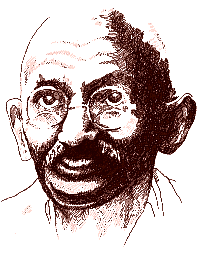 A Thin Indian Man With Not Much hair sits alone on a bare floor, wearing nothing but a pair of cheap spectacles, studying the clutch of handwritten notes in his hand. The black – and – white photograph takes up a full page in the newspaper. In the top left-hand corner of the page, in full color, is a small rainbow – stripe apple. Below this, there’s a slangily American injection to “Think Different”. Such is the present-day power of business. Even the greatest of the dead may summarily be drafted into its image ad campaign. Once, a half-century ago, this bony man shaped a nation’s struggle for freedom. But that, as they say, is history. Now Gandhi is modeling for Apple. His thoughts don’t really count in this new incarnation. What counts is that he is considered to be “on message”, in line with the corporate philosophy of Apple.
A Thin Indian Man With Not Much hair sits alone on a bare floor, wearing nothing but a pair of cheap spectacles, studying the clutch of handwritten notes in his hand. The black – and – white photograph takes up a full page in the newspaper. In the top left-hand corner of the page, in full color, is a small rainbow – stripe apple. Below this, there’s a slangily American injection to “Think Different”. Such is the present-day power of business. Even the greatest of the dead may summarily be drafted into its image ad campaign. Once, a half-century ago, this bony man shaped a nation’s struggle for freedom. But that, as they say, is history. Now Gandhi is modeling for Apple. His thoughts don’t really count in this new incarnation. What counts is that he is considered to be “on message”, in line with the corporate philosophy of Apple.
The advertisement is odd enough to be worth dissecting a little. Obviously it is rich in unintentional comedy. M. K. Gandhi, as the photograph itself demonstrates, was a passionate opponent of modernity and technology, preferring the pencil to the typewriter, the loincloth to the business suite, the plowed field to the belching manufactory. Had the word processor been invented in his lifetime, he would almost certainly found it abhorrent. The very term word processor, with its overly technological ring, is unlikely to have found favor.
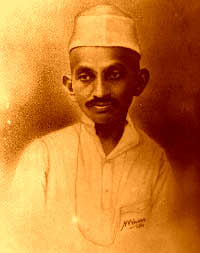 “Think Different”. Mahatma Gandhi in his younger days a sophisticated and westernized lawyer, did indeed change his thinking more radically than most people do. Ghanshyam Das Birla, one of the merchant princes who backed him, once said, “He was more modern than I. But he made a conscious decision to go back to the Middle Ages”. This is not, presumably, the revolutionary new direction of thought that the good folks at Apple are seeking to encourage.
“Think Different”. Mahatma Gandhi in his younger days a sophisticated and westernized lawyer, did indeed change his thinking more radically than most people do. Ghanshyam Das Birla, one of the merchant princes who backed him, once said, “He was more modern than I. But he made a conscious decision to go back to the Middle Ages”. This is not, presumably, the revolutionary new direction of thought that the good folks at Apple are seeking to encourage.
Gandhi today is up for grabs. He has become abstract, a historical, postmodern, no longer a man in and of his time but a free-floating concept, a part of available stock of cultural symbols, an image that can be borrowed, used, distorted, reunited to fit many different purposes, and to the devil with historicity or truth.
Richard Attenborough’s much-Oscared movie Gandhi, struck me, when it was first released, as an example of this type of unhistorical Western saint making. Here was Gandhi-as-guru, purveying that fashionable product, the Wisdom of the East; and Gandhi-as-Christ, dying (and, before that, frequently going on hunger strike) so that other might live. His philosophy of nonviolence seemed to work by embarrassing the British into leaving; freedom could be won, film appeared to suggest, by being more moral than your oppressor, whose moral code could then oblige him to withdraw.
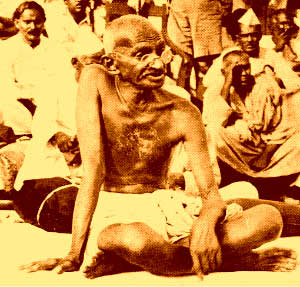 But such is the efficacy of this symbolic Gandhi that the film, for all its simplification and Hollywoodizations, had a powerful and positive effect on many contemporary freedom struggles. South African anti-apartheid campaigners and democratic voices all over South America have enthused to me about the film’s galvanizing effects. This posthumous, exalted “International Gandhi” has apparently become a totem of real inspirational force.
But such is the efficacy of this symbolic Gandhi that the film, for all its simplification and Hollywoodizations, had a powerful and positive effect on many contemporary freedom struggles. South African anti-apartheid campaigners and democratic voices all over South America have enthused to me about the film’s galvanizing effects. This posthumous, exalted “International Gandhi” has apparently become a totem of real inspirational force.
The trouble with the idealized Mahatma Gandhi is that he’s darned so dull, little more than a dispenser of homilies and nostrums (“An eye for an eye will make the whole world go blind”) with just the odd flash of wit (asked what he thought of Western civilization, he gave the celebrated reply, “I think it would be a great idea”). The real man, if it is still possible to use such a term after the generations of hagiography and reinvention, was infinitely more interesting, one of the most complex and contradictory personalities of the century. His full name – Mohandas Karamchand Gandhi, was memorably – and literallt – translated into English by the novelist G. V. Desani as “Action – Slave Fascination – Moon Grocer”, and he was rich and devious a figure as that glorious name suggests.
Entirely unafraid of the British, he was nevertheless afraid of the dark, and always slept with a light burning by his bedside. He believed passionately in the unity of all the peoples of India., yet his failure to keep the Muslim leader Mohammed Ali Jinnah within the Indian National Congress’s fold led to the partition of the country. (For all his vaunted selflessness and modesty, he made no move to object when Jinnah was attacked during a Congress session for calling him “Mr. Gandhi” instead of “Mahatma”, and booed off the stage by the Gandhi’s supporters. Later his withdrawal, under pressure from Jwaharlal Nehru and Sardar Vallabhbhai Patel, of a last-ditch offer to Jinnah of the prime ministership itself, ended the last faint chance of avoiding partition.)
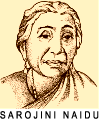 He was determined to live his life as an ascetic, but, as the poet Sarojini Naidu joked, it cost the nation a fortune to keep Gandhi living in poverty. His entire philosophy privileged the village way over that of the city, yet he was always financially dependent on the support of industrial billionaires like Birla. His hunger strikes could stop riots and massacres, but he also once went on hunger strike to force one of his capitalist’s employees to break their strike against the harsh conditions of employment.
He was determined to live his life as an ascetic, but, as the poet Sarojini Naidu joked, it cost the nation a fortune to keep Gandhi living in poverty. His entire philosophy privileged the village way over that of the city, yet he was always financially dependent on the support of industrial billionaires like Birla. His hunger strikes could stop riots and massacres, but he also once went on hunger strike to force one of his capitalist’s employees to break their strike against the harsh conditions of employment.
He sought to improve the conditions of the untouchables, yet in today’s India, these peoples, now calling themselves Dalits and forming and increasingly well-organized with the effective political grouping, have rallied around the memory of their own leader, Bhimarao Ramji Ambedkar, an old rival of Gandhi’s. As Ambedkar’s star has risen among the Dalits, so Gandhi’s stature has been reduced.
The creator of the political philosophies of passive resistance and constructive nonviolence, but spent much of his life far from the political arena, refining his more eccentric theories of vegetarianism, bowel movements, and the beneficial properties of human excrement.
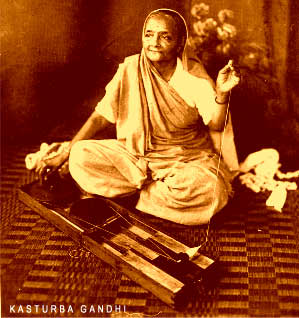 Forever scarred by the knowledge that, as a sixteen-year-old youth, he’d been making love to his wife, Kasturba, at the moment of his father’s death, Gandhi later forswore sexual relations but went on into his old age with what he called his “brahmacharya experiments”, during which naked young man would be asked to lie with all night so that he could prove that he had mastered his physical urges. (He believed that total control over his “vital fluids” would enhance his spiritual powers).
Forever scarred by the knowledge that, as a sixteen-year-old youth, he’d been making love to his wife, Kasturba, at the moment of his father’s death, Gandhi later forswore sexual relations but went on into his old age with what he called his “brahmacharya experiments”, during which naked young man would be asked to lie with all night so that he could prove that he had mastered his physical urges. (He believed that total control over his “vital fluids” would enhance his spiritual powers).
He, and he alone, was responsible for the transformation of the demand for independence into nationwide mass movement that mobilized every class of society against the imperialist, yet the free India that came into being, divided and committed to a program of modernization and industrialization, was not the India of his dreams. His sometime disciple, Nehru, was the arch proponent of modernization, and it was Nehru’s vision, not Gandhi’s that was eventually – and perhaps inevitably – preferred.
Gandhi began by believing that the politics of passive resistance and nonviolence should be effective in any situation, at any time, even against a force as malign as Nazi Germany. Later he was obliged to revise his opinion, and concluded that while the British had responded to such techniques because of their own nature, other oppressors might not.
Gandhian nonviolence is widely believed to be the method by which India gained independence. (The view is assiduously fostered inside India as well as outside it.) Yet the Indian revolution did indeed become violence, and this violence so disappointed Mahatma Gandhi that he stayed away from the Independence celebrations in protest. Moreover, the ruinous economic impact of World War II on Britain and – as British writer Patrick French says in his book Liberty or Death: India’s Journey to Independence and Division – the gradual collapse of the Raj’s bureaucratic hold over India from the mid ’30’s onward did as much to bring about freedom as any action of Gandhi’s. It is probable, in fact, that Gandhian techniques were not the key determinants of India’s arrival at freedom. They gave independence its outward character and were its apparent cause, but darker and deeper historical forces produced the desired effect.
 These days few people pause to consider the complex character of Mahatma Gandhi’s personality, the ambiguous nature of his achievement and legacy, or even the real cause of Indian independence. These are hurried, sloganizing times, and we don’t have the time or, worse, the inclination to assimilate many-sided truths. The harshest truth of all is that Mahatma Gandhi is increasingly irrelevant in the country whose “little father” – Bapu – he was. As the analyst Sunil Khilnani has pointed out, India came into being a secularized state, but Gandhi’s vision was essentially religious. However, he “recoiled” from Hindu nationalism. His solution was to forge an Indian identity out of the shared body of ancient narratives. “He turned to the legends and stories from the India’s popular religious traditions, preferring their lessons to the supposed ones of the history”.
These days few people pause to consider the complex character of Mahatma Gandhi’s personality, the ambiguous nature of his achievement and legacy, or even the real cause of Indian independence. These are hurried, sloganizing times, and we don’t have the time or, worse, the inclination to assimilate many-sided truths. The harshest truth of all is that Mahatma Gandhi is increasingly irrelevant in the country whose “little father” – Bapu – he was. As the analyst Sunil Khilnani has pointed out, India came into being a secularized state, but Gandhi’s vision was essentially religious. However, he “recoiled” from Hindu nationalism. His solution was to forge an Indian identity out of the shared body of ancient narratives. “He turned to the legends and stories from the India’s popular religious traditions, preferring their lessons to the supposed ones of the history”.
It didn’t work. In today’s India, Hindu nationalism is rampant in the form of the Bhartiya Janta Party. During the recent elections, Gandhi and his ideas have scarcely been mentioned.
In the early 1970s the writer Ved Mehta spoke to one of Gandhi’s leading political associates, a former Governor-General of independent India, C. Rajagopalachari. His verdict on Gandhi’s legacy is disenchanted, but in today’s India, on the fast track to free-market capitalism, it still rings true: “The glamour of modern technology, money, and power is to seductive that no one – I mean no one – can resist it. The handful of Gandhian who still believe in his philosophy of a simple life in a simple society are mostly cranks”.
 What, then is greatness? In what does it reside? If a man’s project fails, or survives only in irredeemably tarnished form, can the force of his example still merit the extreme accolade? For Jawaharlal Nehru, the defining image of Gandhi was “as I saw him marching, staff in hand, to Dandi on the Salt March in 1930. Here was the pilgrim on his quest of truth, quite, peaceful, determined, and fearless, who would continue that quest and pilgrimage, regardless of consequences”. Nehru’s daughter Indira Gandhi later said, “More than his words, his life was his message”. These days, that message is better heeded outside India. Albert Einstein was one of many to praise Gandhi’s achievement; Martin Luther King Jr., the Dalai Lama, and all the world’s peace movement have followed in his footsteps. Mahatma Gandhi, who gave up cosmopolitanism to gain a prove resilient, smart, tough, sneaky and, yes, ethical enough to avoid assimilation by global Mc Culture (Mac culture too). Against this new empire, Gandhian intelligence is a better weapon than Gandhian piety. And passive resistance? We’ll see.
What, then is greatness? In what does it reside? If a man’s project fails, or survives only in irredeemably tarnished form, can the force of his example still merit the extreme accolade? For Jawaharlal Nehru, the defining image of Gandhi was “as I saw him marching, staff in hand, to Dandi on the Salt March in 1930. Here was the pilgrim on his quest of truth, quite, peaceful, determined, and fearless, who would continue that quest and pilgrimage, regardless of consequences”. Nehru’s daughter Indira Gandhi later said, “More than his words, his life was his message”. These days, that message is better heeded outside India. Albert Einstein was one of many to praise Gandhi’s achievement; Martin Luther King Jr., the Dalai Lama, and all the world’s peace movement have followed in his footsteps. Mahatma Gandhi, who gave up cosmopolitanism to gain a prove resilient, smart, tough, sneaky and, yes, ethical enough to avoid assimilation by global Mc Culture (Mac culture too). Against this new empire, Gandhian intelligence is a better weapon than Gandhian piety. And passive resistance? We’ll see.
 Kids Portal For Parents India Kids Network
Kids Portal For Parents India Kids Network
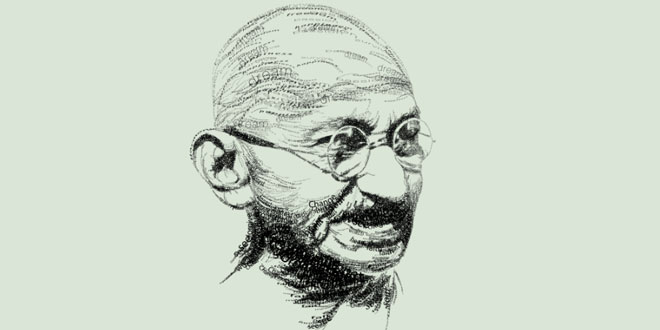
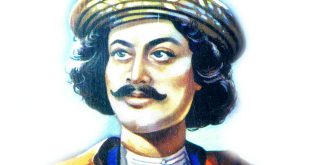
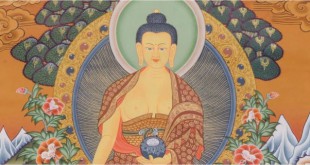
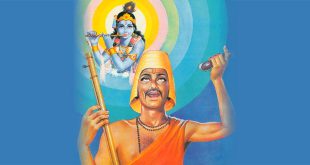




I learned some new things today about Gandhi.
This is useful